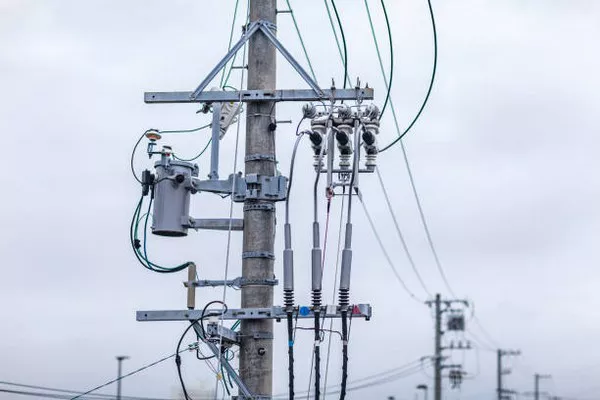Transformers are indispensable components of modern electrical power systems, responsible for stepping up or stepping down voltage levels, ensuring efficient energy transmission and distribution. Given their critical role, it is essential to assess the performance, safety, and reliability of transformers through comprehensive testing. Transformer testing encompasses a wide range of techniques and methods designed to evaluate various aspects of a transformer’s operation. This article delves into the world of transformer testing, exploring its different types and the significance of each in maintaining a robust electrical infrastructure.
Routine Testing
Routine testing is performed during the manufacturing process to ensure that transformers meet standard specifications and are free from any defects. These tests are critical in assuring the quality of the transformer. Common routine tests include:
1. Insulation Resistance Test: This test measures the insulation resistance between the transformer windings and the transformer tank. It helps identify any insulation breakdowns that may lead to a fault in the future.
2. Turns Ratio Test: This test evaluates the turns ratio between the primary and secondary windings of the transformer. A deviation from the specified ratio could indicate winding or turn-to-turn short circuits.
3. Winding Resistance Test: The winding resistance test measures the resistance of the transformer’s primary and secondary windings. It is a vital indicator of the transformer’s condition, as increased resistance may suggest poor connections or deteriorating insulation.
4. No-Load Loss and Excitation Current Test: This test assesses the core loss (no-load loss) and magnetizing current (excitation current) of the transformer. It is crucial in determining the transformer’s efficiency and losses when it operates at no load.
Type Tests
Type tests are conducted on prototype transformers to verify their design and performance characteristics. These tests ensure that a transformer can meet the specific requirements of a given application. Common type tests include:
1. Temperature Rise Test: The temperature rise test evaluates how a transformer handles heat. It measures the difference between the initial and final winding temperatures under full load. The transformer should not exceed the allowable temperature rise to prevent insulation degradation.
2. Impulse Voltage Withstand Test: Transformers must withstand high voltage surges caused by lightning strikes or switching operations. The impulse voltage test assesses a transformer’s ability to handle such surges without breakdown.
3. Short-Circuit Withstand Test: Short-circuit tests simulate the impact of a fault on the transformer. These tests determine the ability of a transformer to withstand high fault currents without damage.
4. Sound Level Test: Noise generated by transformers can be a concern in certain applications, such as residential areas. The sound level test measures the noise level produced by a transformer and ensures it complies with relevant standards.
Special Tests
Special tests are conducted when specific conditions or requirements demand more extensive assessments. These tests are often related to unique operating conditions or unusual applications. Some special tests include:
1. Load Loss Test: The load loss test evaluates the losses that occur in a transformer when it is under load. It is an essential test for understanding the transformer’s efficiency in actual operating conditions.
2. Tan Delta and Capacitance Test: This test measures the dielectric properties of the insulation material and helps detect any insulation-related issues.
3. Dissolved Gas Analysis (DGA): DGA is a powerful diagnostic tool that analyzes gases dissolved in transformer oil. The presence of specific gases can indicate insulation degradation or partial discharge.
4. Sweep Frequency Response Analysis (SFRA): SFRA is used to assess the mechanical integrity of a transformer by analyzing its frequency response. Changes in the response can indicate winding deformations or mechanical damage.
Diagnostic Tests
Diagnostic tests are employed during the operational life of a transformer to monitor its condition and predict potential issues. These tests are essential for ensuring the transformer’s reliability and extending its lifespan. Key diagnostic tests include:
1. Partial Discharge Measurement: Partial discharges in a transformer can be a precursor to insulation failure. Measuring and monitoring partial discharges can help detect issues before they become critical.
2. Insulation Resistance and Polarization Index Test: Periodic insulation resistance tests, along with polarization index testing, assess the condition of the transformer’s insulation over time. A decreasing polarization index can signal insulation deterioration.
3.Sweep Frequency Response Analysis (SFRA): SFRA, also used in special tests, is a valuable tool for diagnosing mechanical issues in transformers during their operational life.
4. Oil Quality Analysis: Regular analysis of the transformer oil can reveal a wealth of information about the transformer’s condition, including moisture content, chemical breakdown, and the presence of contaminants.
On-Load Tap Changer (OLTC) Tests
Transformers equipped with on-load tap changers require specific testing to ensure their proper operation and longevity. OLTC tests include:
1. Tap Changer Operation Test: This test ensures that the tap changer operates smoothly and switches between taps as needed. Any malfunction can lead to voltage regulation issues.
2. Dynamic Resistance Measurement: Dynamic resistance measurement assesses the condition of the OLTC’s transition resistance during tap changing.
3. OLTC Speed and Control Tests: These tests evaluate the speed and control mechanism of the on-load tap changer to ensure it operates within acceptable parameters.
Conclusion
Transformer testing is a multi-faceted process that encompasses various types of tests, each serving a distinct purpose in ensuring the reliability, safety, and performance of transformers. Routine, type, special, diagnostic, and OLTC tests are essential to different stages of a transformer’s lifecycle, from manufacturing to operation and maintenance.
Proper transformer testing not only safeguards the electrical grid but also extends the life of these critical assets, reducing downtime and maintenance costs. As electrical systems continue to evolve and become more sophisticated, transformer testing remains a fundamental practice to meet the demands of modern power distribution. By understanding the types of transformer testing and their importance, power utilities and industries can maintain a resilient and efficient electrical infrastructure.

